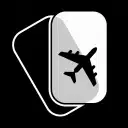Understanding the Difference in Safety Between Part 91 (Private) and Part 135 (Charter) Operations
Making the decision between owning your own private aircraft or utilizing a private jet charter service is one of the most difficult and important decisions you will ever make. When considering the advantages of both business models, it can be difficult to determine which option will afford you with the most safety and security for your investment. Having a working knowledge of both FAR Part 91 and Part 135 regulations, however, could help you make the right decision for you and your company.
New entrants to the private aviation industry may not be familiar with the Federal Aviation Regulations (FARs) for both general aviation and private jet charter operations. The FARs, established by the Federal Aviation Administration (FAA), govern all aircraft operations in the United States. The FARs were designed to promote aviation safety and protect passengers from unnecessary risk. Under the FARs, aircraft operations conducted by privately-owned aircraft are governed by FAR Part 91 regulations, while “air taxi” or private jet charter operations are governed by FAR Part 135 regulations.
When consulting your FAR Aeronautical Information Manual (AIM), it can be difficult to identify the differences between FAR Part 91 and Part 135 regulations. As a rule, FAR Part 135 (air charter) aircraft maintenance and safety requirements are far stricter than Part 91 (private) regulations because aircraft operators fly “for compensation or hire.” Part 135 regulations were designed to establish a standard for professionalism, safety and best practices in the air charter industry. These regulations govern pilot training and experience, aircraft maintenance, safety procedures and insurance requirements.
Under the more lenient Part 91 section of the FAR/AIM, private aircraft are subject to less rigorous maintenance standards. Under Part 91, aircraft owners are only required to establish an “inspection program” for their aircraft, which can be typically accomplished through an “annual” inspection. Annual inspections evaluate the airworthiness of private aircraft by evaluating the inspection intervals, parts replacement and life-limited components of private aircraft. Conversely, Part 135 aircraft operators are required to establish a more rigorous maintenance program (such as the 100-hour inspection) for their charter aircraft. This inspection requires aircraft operators to inspect their aircraft every 100 hours and continually provide assurance of the safety and integrity of their private aircraft.
In addition to more frequent maintenance requirements, Part 135 charter aircraft are also subject to certain runway length and weather reporting restrictions. Every private jet aircraft has certain runway length limitations referred to as takeoff and landing distances. These distances vary based on the size and weight of your aircraft. While Part 91 aircraft can utilize any airport that meets with their own runway length requirements, Part 135 aircraft can only utilize airports where they can land within the first 80 percent of the runway. In addition, Part 135 charter aircraft can only conduct instrument approaches into airports with on-site weather reporting facilities, while Part 91 aircraft can conduct instrument procedures into any airport.
Although Part 135 regulations may seem more restrictive, it’s important to understand that these regulations were designed to ensure your personal safety on jet charter flights. The stricter maintenance requirements of Part 135 help to ensure that charter flights are conducted on the safest and most highly-maintained private jet aircraft in the industry. In addition, Part 135 runway length requirements prevent charter operators from utilizing potentially unsafe airports with short runways. Part 135 weather reporting restrictions make certain that your air charter pilots obtain the necessary weather information before attempting an instrument approach procedure into any airport.
At Stratos Jet Charters, we understand the risks of combining cursory flight operations with “laid-back” maintenance programs. A few weeks ago, we heard the story of the Piper Seminole crash that took the lives of four, young Part 91 pilots. If you haven’t heard the story, four Florida Institute of Technology (FIT) pilots were departing from the Palm Beach Airport, when they lost power in their left engine just after takeoff. The pilots were not able to react quickly enough, and the aircraft crashed into the Palm Beach International Airport. Although the NTSB has yet to release the official report of the crash, it is most probable that the aircraft crashed as a result of engine failure.
Accidents like the Piper Seminole crash are perfect examples of why you should work with experienced private flight advisors to find fully-licensed Part 135 aircraft for your private jet flights. Part 135 regulations have helped establish a level of consistency that can prevent accidents like these from happening. The enhanced safety requirements for Part 135 flights provides passengers with the assurance of a safe and well-maintained aircraft. By choosing to utilize a private jet charter service, you and your company can acquire the most safety and security for your investment.
Are you ready to book your Orlando and Miami charter flight yet?
Our friendly, expert air charter agents are here to answer questions or start your quote today. Don`t wait, call now and we'll get you on your way to your destination!
Call 888-593-9066










